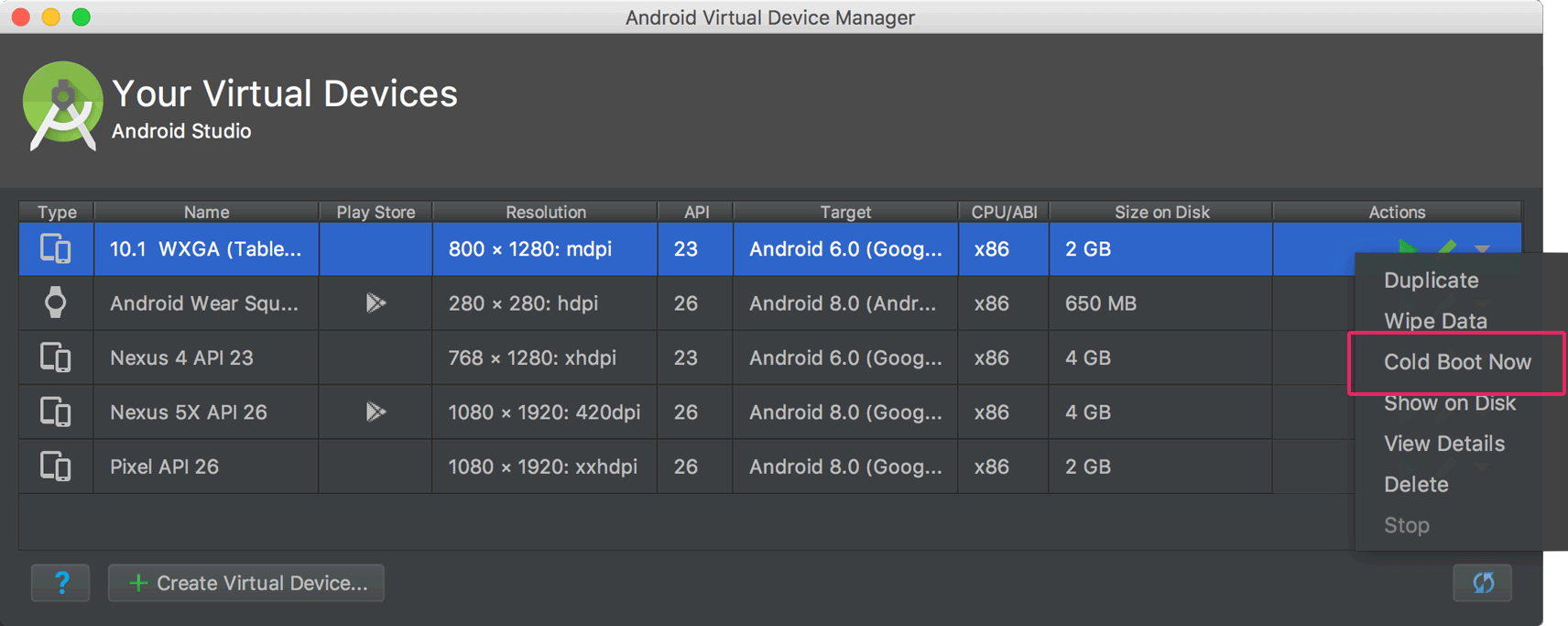

- #Mac android emulator start install#
- #Mac android emulator start Pc#
- #Mac android emulator start download#
- #Mac android emulator start windows#
In comparison to a Samsung Galaxy S9+, BlueStacks has demonstrated performance increases from 12.6% for Player Unknown’s Battlegrounds game to a maximum of 66.67% for Idle Heroes. Thus, one can play any game such as PUBG, Clash of Clans, or Ruler Survival without experiencing micro-stutters or FPS drops.
#Mac android emulator start Pc#
Playing the game on a PC provides the advantage of the graphics card, intermediary architectures such as DirectX, and the benefit of better interaction devices. While BlueStacks recommends Intel HD 5200 or higher graphics card to enable playing games seamlessly, there is no question that playing Android games on BlueStacks would provide for a much better gaming experience.

Because of low system requirements, along with facilitating the use of mouse and keyboard, BlueStacks enables a faster functioning than any smartphone.

The PC on which it is to be used will need to have at least 4GB of disk space for storing Android apps and games and their data which again is requirement easy to tick off. It requires a minimum of 2GB RAM, while in 2018, most users would have more than 6GB of RAM installed in their systems already.
#Mac android emulator start install#
In this post, we have seen that is possible to install Android Studio in Macbook Air M1 and use a virtual device even that your M1 doesn’t support VT-x.BlueStacks is very light on your PC, which is one of the reasons why most users rank it as one of the best PC Android emulators.
#Mac android emulator start windows#
Make sure to have Project tools available in Android Studio (View -> Tool Windows -> Project)Īfter pressing the launch button you will get your Android application running in your ARM virtual emulator :-) dmg file and click open to skip the developer verification.Īfter installing the virtual emulator, we have to open it from the Applications menu.Īfter opening it you will see Virtual emulator in Android Studio available to deploy your Android application. Once you have downloaded you have to right-click to the.
#Mac android emulator start download#
The only thing that you have to do is to download the last available emulator for Apple silicon processors from Github The easiest way to proceed is to use a physical device, but what if you haven’t one available at the moment you are developing?įrom now on, we will go with the option of using an Android virtual device based on an ARM system image as options 2 and 3 are not possible to execute. If you want to learn more regarding virtualization in processors you can read the following Wikipedia article, the thing is that our M1 processor doesn’t support VT-x, however, we have options to run an Android Virtual Device.Īs the previous message was telling us, we have 4 options. (This is 10x slower than hardware-accelerated virtualization)Īndroid virtual device Pixel_3a_API_30_x86 was successfully createdĪnd also in the Android virtual device (AVD) screen you will read the following warning: Unfortunately, your computer does not support hardware-accelerated virtualization.Ģ - Develop on a Windows/OSX computer with an Intel processor that supports VT-x and NXģ - Develop on a Linux computer that supports VT-x or SVMĤ - Use an Android Virtual Device based on an ARM system image When you install Android Studio you will get the following warning: Using Android studio in the new Macbook Air As I said in the previous post, these configurations are workarounds until stable versions are released, however, for me, they have been useful and I guess that someone in the same situation as me can benefit from that. This is the second post that I dedicate to talk about configurations using the new M1 Apple processor.


 0 kommentar(er)
0 kommentar(er)
